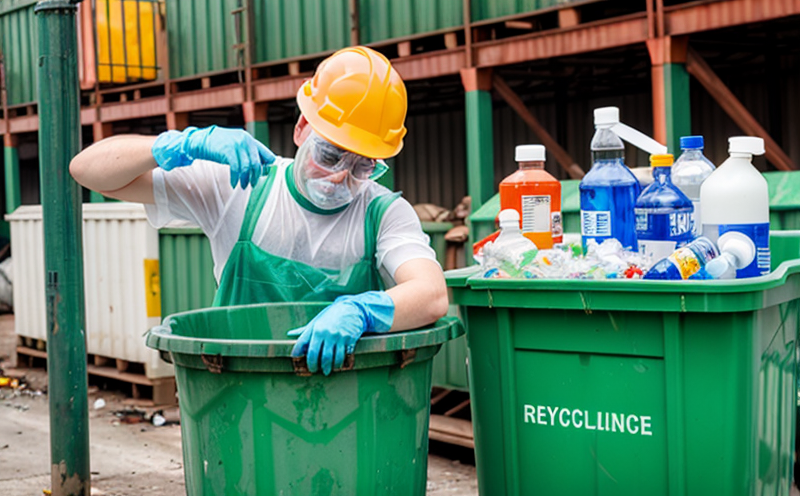CFR 261 Identification Testing of Hazardous Waste
The Comprehensive Environmental Response, Compensation, and Liability Act (CERCLA) establishes a regulatory framework for the identification of hazardous waste. Under CFR 261, various tests are conducted to determine whether a substance or mixture meets the criteria for being classified as a hazardous waste. This classification is critical because it governs how the material must be managed, stored, transported, and disposed of.
The first step in identifying a hazardous waste under CFR 261 involves analyzing the characteristics that could render it hazardous. These characteristics include ignitability, corrosivity, reactivity, and toxicity (TCLP test). The Toxicity Characteristic Leaching Procedure (TCLP) is a key part of this process, which simulates leaching conditions to assess if the waste could pose an environmental threat.
For ignitable wastes, flash points are measured using tests like ASTM D56. Corrosive wastes are identified by their pH levels; typically, materials with a pH less than 2 or greater than 12.5 are considered hazardous. Reactivity testing often involves chemical compatibility checks to ensure that the waste does not react dangerously in storage.
For toxicity identification, the TCLP test is conducted, which measures the concentration of harmful substances released from the waste into water. This test helps determine if a waste could contaminate groundwater or surface water. The procedure involves placing a sample of the waste in an acidic leachate solution and incubating it for 18 hours at 90°F (32°C) under specific conditions.
Once the tests are complete, the data is analyzed to determine if the substance meets the criteria for hazardous waste. Compliance officers must ensure that all testing is conducted in accordance with established standards such as ASTM and EPA guidelines. This process not only ensures regulatory compliance but also helps protect public health and the environment.
Environmental consultants often rely on detailed reports from these tests to advise clients on proper management strategies for hazardous waste. The results of this testing are crucial for ensuring that companies meet their environmental obligations under CFR 261 and other relevant regulations.
- The TCLP test is a critical component, especially for determining the toxicity characteristics of waste.
- ASTM D56 is used to measure flash points for ignitable wastes.
- EPA guidelines are essential in ensuring compliance with CFR 261 regulations.
Industry Applications
The identification testing of hazardous waste under CFR 261 is applicable across various industries, including manufacturing, chemical processing, and pharmaceuticals. In these sectors, the proper classification of wastes is essential for maintaining compliance with environmental regulations.
Mining companies must ensure that all potentially toxic substances are properly identified as hazardous waste to prevent contamination during extraction processes. Similarly, in the petrochemical industry, where volatile organic compounds (VOCs) and other potentially harmful chemicals are common, accurate identification of hazardous wastes is crucial for safe handling.
The pharmaceutical sector also deals with a wide range of chemical substances that may be considered hazardous waste. Proper identification helps in managing these materials safely throughout their lifecycle, from production to disposal. This ensures that all operations comply with environmental protection laws and regulations like CFR 261.
For quality managers and R&D engineers working in these industries, understanding the intricacies of CFR 261 testing is vital for developing sustainable waste management practices. By leveraging accurate identification tests, they can minimize risks associated with improper handling or disposal of hazardous materials.
International Acceptance and Recognition
The identification testing of hazardous waste under CFR 261 is widely recognized internationally for its stringent standards in environmental protection. This approach has been adopted by many countries to ensure consistent methods across borders when dealing with hazardous materials.
The European Union's Directive on Waste Framework (2008/98/EC) closely aligns with the principles set forth by CFR 261, emphasizing accurate and reliable identification processes for hazardous waste. Similarly, Australia’s National Environment Protection Measures (NEPM) regulations also incorporate similar practices to identify hazardous substances.
These international standards provide a framework that ensures proper handling of hazardous wastes globally. By adopting these guidelines, countries can ensure that their industries operate safely while minimizing environmental impacts. The recognition and acceptance of CFR 261 tests in various regions underscore the importance of adhering to such robust protocols for waste management.
For businesses operating internationally, compliance with both local regulations and internationally accepted standards like those found in CFR 261 is crucial. This ensures that all operations are conducted safely and responsibly across different jurisdictions.
Environmental and Sustainability Contributions
- By accurately identifying hazardous wastes, companies can prevent environmental contamination through proper disposal methods.
- The use of CFR 261 testing helps in reducing the risk of accidental releases into ecosystems.
- Through precise identification, organizations contribute to safer working environments for employees involved in handling and managing waste materials.
- This process also aids in the development of more sustainable processes by identifying potential areas where improvements can be made in waste management practices.





